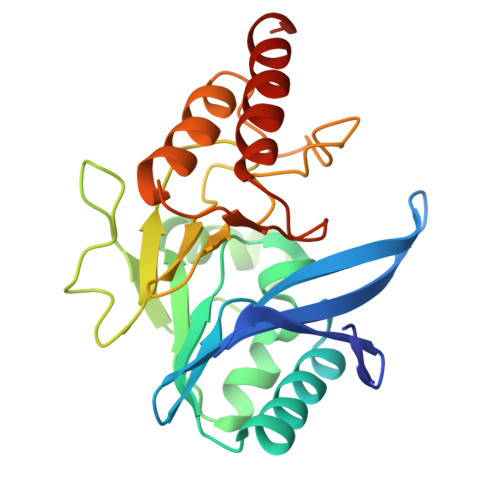Structural insight into the subclass B1 metallo-beta-lactamase AFM-1.
Niu, W., Ti, R., Li, D., Dong, R., Dong, J., Ye, Y., Xiao, Y., Wang, Z.(2024) Biochem Biophys Res Commun 720: 150102-150102
- PubMed: 38759302
- DOI: https://doi.org/10.1016/j.bbrc.2024.150102
- Primary Citation of Related Structures:
8Z7M - PubMed Abstract:
The emergence of drug-resistant bacteria, facilitated by metallo-beta-lactamases (MBLs), presents a significant obstacle to the effective use of antibiotics in the management of clinical drug-resistant bacterial infections. AFM-1 is a MBL derived from Alcaligenes faecalis and shares 86% homology with the NDM-1 family. Both AFM-1 and NDM-1 demonstrate the ability to hydrolyze ampicillin and other ¦Â-lactam antibiotics, however, their substrate affinities vary, and the specific reason for this variation remains unknown. We present the high-resolution structure of AFM-1. The active center of AFM-1 binds two zinc ions, and the conformation of the key amino acid residues in the active center is in accordance with that of NDM-1. However, the substrate-binding pocket of AFM-1 is considerably smaller than that of NDM-1. Additionally, the mutation of amino acid residues in the Loop3 region, as compared to NDM-1, results in the formation of a dense hydrophobic patch comprised of hydrophobic amino acid residues in this area, which facilitates substrate binding. Our findings lay the foundation for understanding the molecular mechanism of AFM-1 with a high affinity for substrates and provide a novel theoretical foundation for addressing the issue of drug resistance caused by B1 MBLs.
Organizational Affiliation:
School of Life Sciences, Tianjin University, Tianjin, 300072, China.















